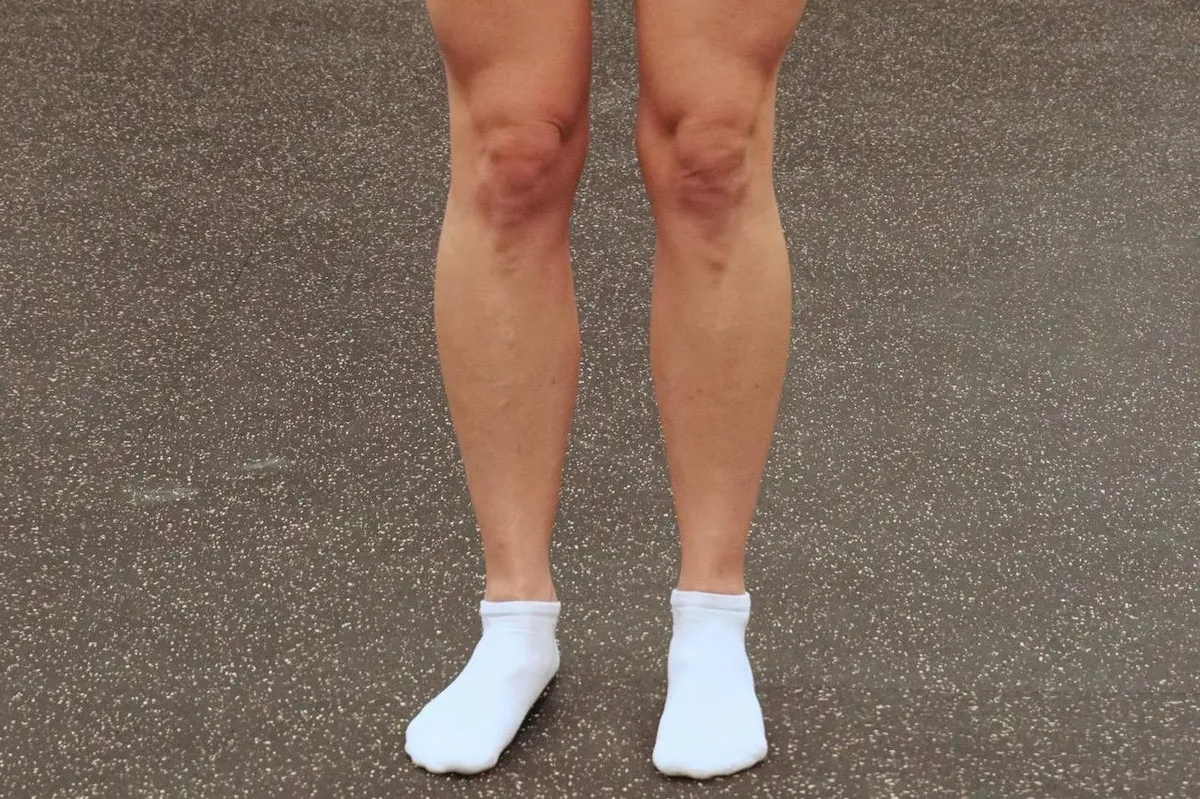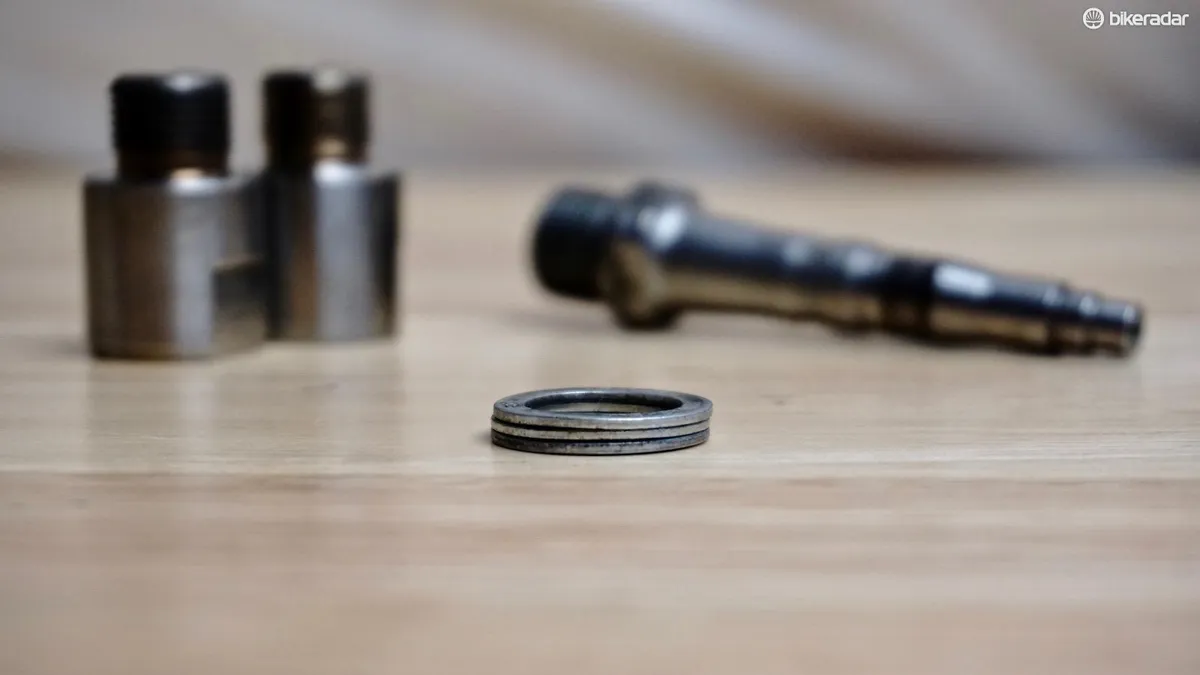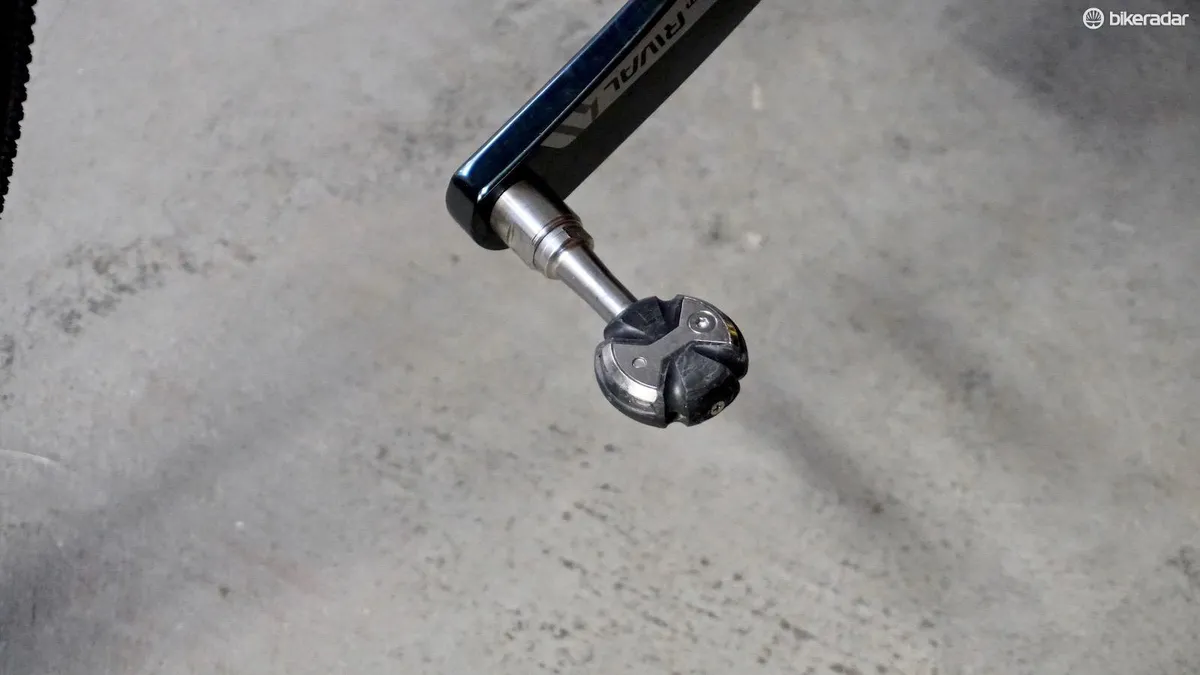Q-factor is one of those mystical measurements for a bike that you often see discussed as being important to get right. But what is it, what’s its impact and how do you change it?
A bike is a highly adjustable machine. You can alter the position of practically every part, from saddle height to handlebar width. Beyond that, you can purchase different chainrings and cassettes to get a gearing setup that suits you.
But one of the trickiest measurements to change and to get right is a bike’s Q-factor – or more correctly its stance width.
Below, we’ll explain what Q-factor is, why it’s important, the effects of it being incorrect and what you can do to adjust yours.
What is Q-factor on a bike and why is it important?

Q-factor is the lateral distance between the outside edges of the two crank arms. As such, it’s a feature of your crankset; you’ll find the Q-factor quoted by many brands on their websites. So, technically, it’s not possible to change it without changing your crankset.
But when Q-factor is discussed, the measurement being referred to is often your stance width.
This is the lateral distance between your feet when pedalling. This takes account of where your feet are positioned on the pedals, the shape and size of the pedals and the length of the pedal spindles.
There are ways to alter your stance width, as discussed below. Getting the optimum stance width for your anatomy could make your pedalling more efficient, reduce the risk of injury and help prevent your heels rubbing on your crank arms or chainstays.
Q-factor doesn’t just affect your pedalling though. A wider Q-factor will reduce the amount by which you can lean a bike into a corner without the risk of grounding a pedal.
How does Q-factor affect your pedalling?

If you think about how it feels to walk with your feet wide apart, a wider Q-factor has the same effect when riding your bike.
If your feet are wide apart, it’s less mechanically efficient and works your muscles in an unusual way, possibly leading to muscle and joint problems.
Research at the University of Birmingham in the UK around 10 years ago by Dr Xavier Disley showed pedalling to be more efficient at narrower Q-factors than at wider ones. There may be a slight aerodynamic advantage to a narrower Q-factor as well.

Another related measurement is your stance angle, which is the angle your lower limbs make when pedalling. You want this to be as close to how you would walk as possible. Part of a bike fit is often to determine your natural stance width off the bike and adjust your fit on the bike to reflect this.
If your Q-factor is incorrect, this can manifest in discomfort, often at the knees but also sometimes in the feet or hips.
The different Q-factors on road, mountain, gravel and electric bikes

Road bikes and gravel bikes have a narrower bottom bracket than mountain bikes and straighter crank arms, which gives them a narrower Q-factor of around 148mm.
In contrast, most mountain bikes have a Q-factor that’s around 20mm wider at 170mm, due to a longer crank axle and crank arms that splay out more from the axle.
The wider Q-factor makes it easier to provide clearance in the bike’s frame for the wider mountain bike tyres that are typically found on these bikes.
Fat bikes have a wider Q-factor again, often 235mm, to accommodate their very wide tyres, and this can have a pronounced effect on pedalling efficiency.
Many mid-mounted electric bike motors are wider than standard cranksets, resulting in a wider Q-factor.
To compensate, Rotor, for example, sells lower Q-factor cranks, which bring the overall Q-factor more in line with a non-assisted MTB. Its eKapic cranks for Bosch motors, for example, result in a 171mm Q-factor.

The newer Shimano EP6 and EP8 series motors are built narrower than many older electric bike motors to give a Q-factor more like a standard mountain bike at 177mm and the Bosch Performance Line SX reduces this to 160mm.
It’s worth noting that a bike’s Q-factor doesn’t vary with its frame size. The same crank model is fitted to all sizes of a bike model, and it will have the same Q-factor even if it has longer crank arms.
Higher-quality children’s bikes, such as those from Frog, often have cranks with a narrower Q-factor to better suit smaller, younger riders.
Track bikes also have a lower Q-factor than road bikes to improve riders’ aerodynamics.
What should my Q-factor be?

Your optimum Q-factor is highly dependent on your anatomy, in particular the width of your pelvis.
Most people can adapt to a pedal position with a Q-factor that’s suboptimal for them. However, this may result in the centre of your knees being misaligned with your hips and ankles during your pedal stroke.
If your knees are moving inboard, it’s a sign that your Q-factor could be too wide for you. If they are moving outboard it may be too narrow.
It’s worth noting that this can also be the result of an incorrect saddle height, so it’s important to check your saddle height before taking measures to adjust your Q-factor.
Taller people’s natural stance width is typically wider than shorter people’s, so they may need to adjust their Q-factor to reflect this.
A bike fit should address all the factors that could affect your pedalling comfort and efficiency, including your Q-factor.
How do I change my Q-factor?
There are a few ways in which you can alter your Q-factor if you think your current setup isn’t quite right for you, which we’ll now run through.
Change your cleat position

The majority of cycling cleats and their respective pedal systems allow some degree of inboard/outboard adjustment, which will alter how far apart your feet are placed.
Shimano SPD-SL road cleats, for example, allow 6mm of lateral movement (per cleat), so you can move your feet up to 12mm further apart or closer together. Look Keo cleats offer less lateral position alteration at 4mm.
Look and Shimano’s two-bolt SPD cleats only allow you 2mm of lateral adjustment, however.
Wahoo Speedplay is the road bike pedal system that gives you the greatest lateral cleat position adjustability, with 8mm of adjustment possible.
Of course, you could always use flat pedals. Many flats have very wide platforms, which enable you to place your feet pretty much where you like.
Add spacer washers

Placing spacer washers on your pedal spindles can add another 1 to 3mm to your Q-factor.
You should be careful with this because you’re reducing the amount of pedal thread in the crank arm. Crank threads are typically made of aluminium alloy and quite soft, so there’s a risk of stripping the crank – an expensive mistake.
Buy pedals with longer spindles

If your cleats don’t allow you to set a wide enough Q-factor, some pedals are available with longer axles.
Both Shimano Dura-Ace and Ultegra road bike pedals are sold with 4mm longer axles, as well as the standard width, enabling you to increase your Q-factor.
Shimano XTR M9120 pedals can be bought with 3mm shorter axles to lower your Q-factor.
Wahoo Speedplay Zero pedals, but not other Wahoo models, are available in four spindle lengths, from 53mm up to 65mm, offering plenty of stance-width adjustability.
Buy spindle extenders

You can also buy spindle extenders. These screw into your cranks and have threads inside that enable you to screw your pedals into them.
Often, they will add around 20mm to the length of each pedal axle, giving you a much wider stance.
That increases the angular leverage on your crank's arms though and, as with spacer washers, may increase the risk of stripping the crank threads or even breaking a crank.
Buy a wider Q-factor crankset

In most cases, a crankset will come in a standard Q-factor. However, Rotor sells its Aldhu crankset with 147mm and 152mm Q-factors.
It’s a pricey way to change your Q-factor, but in combination with different spindle lengths and cleat positions, it could make a substantial difference in stance width if your setup is causing you significant problems, such as knee pain.
